
Text & Photo by Lydia Aisenberg
When American students studying Arabic on the MASA-Givat Haviva program, Intensive Arabic Semester, met with members of Kibbutz Barkai a few months ago, Ovadia Shvika was very interested to hear how one of the Jewish students, who had also studied in Cairo was treated during his time there.
The Arabic speaking veteran member of the Hashomer Hatzair kibbutz in Wadi Ara was genuinely surprised when the student told him he had felt very comfortable in that city and that the Egyptians had been very friendly.
Ovadia assists Intensive Arabic Semester students (who reside and study at Barkai) with their studies and attaches great importance to the program’s involvement in community work at the nearby Israeli Arab Muslim city of Baka al-Gharbiya.
While sitting with Ovadia on the veranda of his modest kibbutz house, spring flowers nodding in the slight breeze, a large group of kibbutz kids troop down the incline between his building and that of neighbors. Three teachers accompany the chattering, energetic children as they pick their way down the sharp slope.
“Maybe one of my grandchildren is among them,” says Ovadia, squinting against the sun to make out each passing child. “Wrong kindergarten,” he comments when the last child has passed by.
Bespectacled, snowy white hair, looking much younger than his age and a heavy smoker, Ovadia Shvika explains that he was born in Haleb, as were his father and grandfather before him. His mother, however, was Egyptian.
“I love the Arabic language and culture and am very jealous of Arabs having such a sense of deep-rootedness,” explains Ovadia. He waves his arm in the direction of Kfar Kara over the other side of Route 65-Wadi Ara highway running parallel to the kibbutz fields, and swinging around to Umm al-Kutuf on a hilltop behind the kibbutz.
Ovadia’s spoken Arabic is different from that of the local Israeli Arab population. “It is almost a different language and I can barely understand the Arabs here in Wadi Ara. They understand me better than I understand them – I just cannot change my way of speech, that’s me, who I am, where I came from."
“In the 1960s we went to Kfar Kara to meet with our Arab neighbors. We attended weddings, also in Umm al-Kutuf and other villages. The relationship was not bad, but on the other hand most of the time they were complaining, and truthfully, compared to how the Arabs are living in Kfar Kara today they were justified. I live here in the kibbutz and I am living in a cupboard,” he says this jovially pointing to the small collective-owned apartment behind him.
Politically active in the Mapam party, Ovadia was one of the movement workers who opened a branch in the village of Barta’a, located on the other side of a quarry and visible from the higher ground of Barkai.
Ovadia says that the relationship between the local Arab population and the veteran members of his kibbutz – founded in 1949 – changed after the war of 1967. The change did not come about immediately, but over a period of time as other events in the Arab world unfolded, and also within Israel and the West Bank. The pre-1967 border is just a short walk from Barkai.
On his birthplace, Syria, Ovadia comments that the late President Assad allowed Jews to leave Syria in the 1970s but only to go to the USA.
He is one of nine children - five girls and four boys. In the early 1960s he read in the Israeli newspaper Al HaMishmar that his sister Evelyn had been caught on the border between Syria and Lebanon disguised as a Christian and sentenced to six months in prison. “She served three months and then one of my brothers changed places with her and served the other three months,” says Ovadia, and further explains: “Our parents had a very popular and prestigious coffee house in Haleb and they had excellent relations with important Syrians, so my father managed to broker an agreement that my brother would do half the sentence.”
These days two of Ovadia’s sisters and one brother and their families live in Brooklyn, New York and another sister in Brazil. He has visited his family in Brooklyn twice and speaks of the large community of Syrian Jews with roots in Haleb that has developed there over the last 40 years.
“They have a very impressive synagogue and tend to marry within the Syrian community. The members of my family in Brooklyn live a very different lifestyle from mine.”
Ovadia’s father died when he was 6 years old and he remembers vividly two years later going to visit a married sister in Lebanon, alone.
The second time he left Haleb for his sister’s home in Beirut, he knew he would not be returning to Syria. He was just 10 years old and he was never again to see his mother. She died from diabetes in 1950.
In 1949 Haleb was a dangerous place in which to live and those who decided to leave – or send their children ahead - fled the city, by sea or simply walked.
“Even though Jews had lived in Haleb for over 400 years it was too risky for most to stay and so I was sent again to Beirut, traveling in a truck through the night, the driver telling everybody I was his son. My name was then Edward as was that of the driver,” he recalls.
After two months in the Lebanese capital, Ovadia was on his way to Israel. Twice attempts to get Ovadia to the coast at night to board a boat destined for Israel were thwarted, but were successful the third time. He remembers the drive through the very quiet, dark streets of Beirut before arriving at a beach. With three others he was put in a skiff and rowed out to sea where he boarded a small ship that quickly filled up with more children and some adults. “I think those rowing the small craft were Christians and I definitely remember money changing hands.”
Ovadia knew none of the children or adults with whom he was about to set sail. He was violently seasick during the passage. The ship made a large loop out to sea before the passengers were offloaded at Nahariya, an Israeli town a few kilometers from the Lebanese border. The weary travelers were given tea and sandwiches, and Ovadia remembers being wide-eyed at the realization that the policemen and policewomen kissing and hugging them were Jewish!
At noon and another truck drive, this time to Haifa to Shaar Aliya, a camp for immigrants at the entrance to Haifa. There is nothing left of Shaar Aliya today, just a rusty sign at the side of the road.
The camp, a former British Army base, was temporary home to Syrian and Iraqi Jews as well as a large number of Ashkenazi Jews from Eastern Europe. The British Army huts were divided into sections with blankets, a different family in each closed off area, and Ovadia was put in with one of the families. He remembers he was always waiting for food and celebrating Chanukah at the camp.
“The dining room was enormous and the food was boiled eggs, olives, bread and tea.”
One dark stormy night in the pelting rain he left the dining room, soaked to the skin and entered the wrong hut. “Well, they all looked exactly the same to me,” he says with a broad smile.
Slowly more children from Syria began to arrive at the camp, including some older children he had known in Haleb as they had studied together at the Talmud Torah.
“We became a group and as we knew some Hebrew we managed to get by. Two brothers and one sister had come to Israel before me. I wanted to live on a kibbutz as one of my brothers was doing.”
One of those brothers he had never met as he had left Haleb to study in Egypt and then moved in 1947 to pre-State Israel. Ovadia knew only two names in Israel – Hazorea and Ramat David – both kibbutzim in the Jezreel Valley.
Ovadia and his friends were told one day that they were going to be taken to Ahuza (uptown Haifa) to be with a group of Youth Aliya.
“I had really long hair and they shaved it all off and presented me with a kova tembel (fool’s hat) the standard headwear of kibbutzniks at the time. It was at this point I began to have really strong feelings of homesickness, missing my mother and my home and being ill with diarrhea. Even though we were well taken care of, had warm clothes, it was not home and nobody around was family.”
A month later Ovadia was taken with other children to Ramat Hadassah, a new youth village near Tivon where for six months they learned Hebrew and worked in the village under the guiding eyes of a caring staff.
“There was a lot of bullying and violence between the children and I was pretty weak as a kid. Fortunately for me, Ezra Siton, a friend from Syria who was two years older than me, took it upon himself to be my protector!”
One day the children were told that if they knew of family in Israel they should write them a letter. Ovadia’s brother Meir, four years older than him, was in Ramat David (at present he is a member of Kibbutz Yifat). Another brother and sister were living in the center of the country in Ramat HaSharon.
Ovadia recalls an operation on his groin carried out in Haifa in 1950. He remembers snow all over the country and being treated kindly when he returned to Ramat Hadassah to recuperate.
“A youth counselor – originally British and with a strange accent – came into the room one day and asked who Shvika was and when I said that it was me, he told me I had a visitor.” A tall man was waiting for Ovadia outside. “I am Avraham, your brother,” said the stranger; both of them began to cry and hug each other.
Avraham took Ovadia to meet his other family members in Ramat HaSharon. He stayed a few days and vividly recalls Avraham buying him ice-cream! Knowing he had family in the country, and being able to spend a short break with them from time to time, made it easier for Ovadia to deal with living at Ramat Hadassah. From there he moved with a large group of youngsters to Kibbutz Yakum, a settlement celebrating the second year since its founding when they arrived upon the collective scene.
“I was a religious kid basically but fell into a group slated for a Hashomer Hatzair kibbutz which is, of course, anything but religious. We were 20 boys and 20 girls, most of whom were Iraqis, but a few also from Syria and Egypt.”
With a polio outbreak affecting many different regions of the world including Israel, Ovadia says that kibbutz people were afraid of the newcomers living with their children and so the newcomers were put up in a disused packing station in the orchards.
“We had crates to put our clothes in, one bare light bulb hanging from the ceiling and the bullies, Iraqi kids, took control. The six months we lived there were awful, with so much bullying. We were then moved to buildings constructed as chicken houses but we had much better staff taking care of us; even though there was always power-play going on the more intellectual among us began to have an influence.”
It was during this period that Ovadia and the other children were introduced to the Hashomer Hatzair ideology of socialism, community living, sharing, equality and so forth.
“This was a very important period for us. I remember there were rumors that the people of the kibbutz didn’t believe in God. At the beginning my fear of God and belief in all I had been told before was strong but little by little it changed and I began to see things differently - a wider perspective on life in general.”
Ovadia spent four years in Yakum before his group was transferred by the kibbutz movement to Harel in the Jerusalem hills in order to strengthen that kibbutz. He worked as a shepherd but after a short time the kibbutz collapsed and once more the remaining 15 members of his group were on the move, this time to Kibbutz HaMapil. While Ovadia served in the IDF Nahal unit in Sinai, the girls from his group were stationed on Kibbutz Barkai in Wadi Ara, then a border kibbutz. When he came to visit the girls, Ovadia was impressed with how much “more alive” the people of Barkai were in comparison to HaMapil, a 20 minute drive away.
On completion of his army service Ovadia moved to Barkai – "not seen too positively by the members of HaMapil", he comments with a chuckle.
Settling down to daily life in Barkai, marrying another member of the Hashomer Hatzair movement, Ovadia once more took up shepherding sheep but this time around the hills and dales of Wadi Ara and the lower slopes of the Amir mountain range on the lip of the Dotan Valley. “I was a shepherd for seven years and then went to work in the fields, growing potatoes, cabbages and other crops,” explains Ovadia. He was also very involved in organizing cultural activities and was voted by the members to be kibbutz general secretary in the early 1970s.
The proud father of four and grandfather of four, Ovadia is also the ‘adopted father’ of hundreds of Ethiopian immigrant youths who went through the absorption process with the Youth Aliya and Na’aleh projects between 1994-2006; he still volunteers twice a week to help immigrant youth. Apart from his dedication to that youthful new immigrant population, Ovadia was a highly respected educator with Israeli youth in need of guidance and support. He also gave them a more than gentle push along the bumpy path of their teen years and their educational challenges in the nearby regional high-school of Mevot Irron.
In the entrance to Ovadia Shvika’s kibbutz home, framed photographs of groups of smiling youthful faces greet visitors. From the expressions on their faces and inscriptions alongside the photos, one can understand why Ovadia is the recipient of the prestigious Youth Aliya Award for Educational Excellence, presented to him in 2008 together with Rachel Rabin – sister of Yitzhak Rabin - and Lova Eliav, founder of the Nitzana Youth Village.
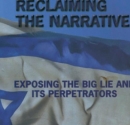 Israel: Reclaiming the Narrative - A Review
Israel: Reclaiming the Narrative - A Review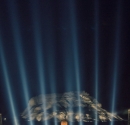 ESRA Outing to Aida at Masada
ESRA Outing to Aida at Masada 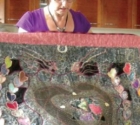 Coffee Group for Immigrants enters 5th year
Coffee Group for Immigrants enters 5th year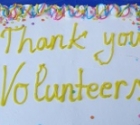 A new website in English - on Volunteering - Launched in Israel
A new website in English - on Volunteering - Launched in Israel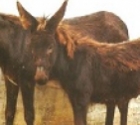 Help Needed for Abused Horses and Donkeys
Help Needed for Abused Horses and Donkeys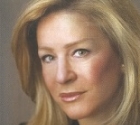 Heather's Heseg
Heather's Heseg Lydia Aisenberg
Lydia Aisenberg